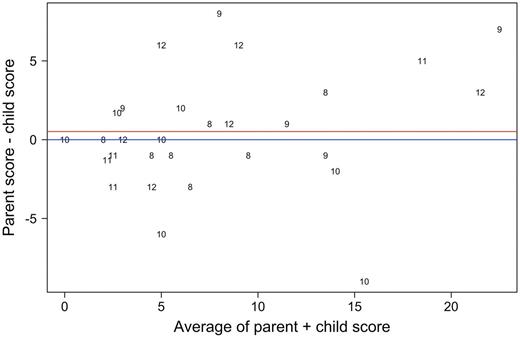Abstract
Introduction
In the pediatric population, pathologic bleeding is often more challenging to identify than in adult patients. Hemorrhagic symptoms are seen in healthy children as well as those with bleeding disorders and children have fewer exposures to events such as surgery that would cause symptoms to manifest. A pediatric bleeding assessment tool may facilitate the accurate evaluation of bleeding symptoms in children.
The Pediatric Bleeding Questionnaire (PBQ) was developed as a screening tool for von Willebrand Disease (VWD), the most common hereditary bleeding disorder. The PBQ provides a quantitative score for bleeding symptoms based on the type and severity of episodes. When administered by experts, the PBQ had a sensitivity of 83% and a specificity of 79%. Recently, the expert-administered PBQ was modified to generate a self-administered PBQ which can be completed by children/parents themselves. A prospective multicentre study was undertaken to validate the Self-PBQ and found it to have a high level of agreement with the expert-administered PBQ, with an intraclass correlation (ICC) of 0.917. However, only children above age 12 yrs completed the Self-PBQ by themselves while those under 12 had a parent fill out the Self-PBQ on their behalf.
The present study is sub-study of the recent multicentre study. Our objectives were to determine whether a modified school age Self-PBQ can be completed by younger children with minimal adult assistance, and to validate the school age Self-PBQ in the 8-12 year-old population.
Methodology
This sub-study was conducted in two phases. Phase 1 involved pre-testing and optimizing the Self-PBQ to be suitable for 8-12 year-olds. Seven subjects aged 8-11 yrs, 5 with a confirmed diagnosis of type 1 VWD and 2 healthy controls, underwent cognitive debriefing to identify any problems in the questionnaire. Based on respondent feedback, item reduction was performed to simplify the PBQ, and modifications were made to the question wording and response options.
In Phase 2, the school age Self-PBQ was tested at 5 participating treatment centres across Canada. Patients aged 8-12 yrs with a known diagnosis of an inherited bleeding disorder were eligible for inclusion. Children completed the Self-PBQ independently or with assistance from their parent and the amount of help required was noted. Parents also filled out the Self-PBQ separately to serve as a comparison. Bleeding scores (BSs) derived from the child self-report were compared to those of the parent proxy. A single measure ICC based on absolute agreement was used to determine the degree of agreement between the child and parent reports. In addition, subgroup analyses were performed to examine whether the correlation differed in younger (8-9 yrs) versus older (10-12 yrs) age groups or based on the severity of the disease. An ICC ≥ 0.70 was considered the minimum standard for reliability based on existing quality criteria.
Results
Thirty-one patients aged 8-12 yrs and their parents completed the Self-PBQ. Two pairs were excluded from the analysis because they did not answer portions of the PBQ and their BSs could not be calculated. Total BSs were used for reliability analysis, performed on a final sample size of 29 pairs. Child and parent scores demonstrated a high level of agreement with an ICC of 0.825. In the age subgroup analysis, the ICC was 0.834 and 0.824 for the 8-9 year-old and 10-12 year-old groups respectively. The ICC was also determined in children with type 1 VWD (ICC = 0.829) versus those with more severe bleeding disorders (ICC = 0.802). Thus, age and disease severity had no significant effect on degree of agreement (Figure).
Conclusion
Our study evaluated the effectiveness of a school age Self-PBQ when completed by children aged 8-12 yrs. The BSs derived from the child self-report were found to have sufficient concordance with those from the parent proxy report. Moreover, the agreement was maintained in younger children aged 8-9 yrs and in children on the more severe spectrum of bleeding disorders. These results indicate that the Self-PBQ is suitable to be incorporated into routine clinical care for the 8-12 year-old population.
Figure: Agreement between child and parent (proxy) total reported bleeding scores (BSs). The difference between child and parent-derived BSs is plotted against the mean of the two measurements. The average of the differences is shown by the red line. The numbers plotted reflect ages of the children.
James: Shire: Research Funding; Bayer: Research Funding; CSL Behring: Research Funding. Klaassen: Baxalta: Honoraria; Agios Pharmaceuticals: Consultancy; Octapharma: Honoraria; Biogen Canada LTD: Consultancy; Amgen: Consultancy; Hoffman-La Roche LTD: Consultancy.
Author notes
Asterisk with author names denotes non-ASH members.


This feature is available to Subscribers Only
Sign In or Create an Account Close Modal